Germany is home to a wide variety of birds, from the colorful Northern Cardinal to the powerful White-tailed Eagle. With its diverse habitats, from mountains to wetlands to forests, Germany is a paradise for birdwatchers and nature enthusiasts alike.
From the majestic Great Grey Shrike to the mysterious Black Woodpecker, Germany’s birds will delight and amaze. This article will take a look at some of the most common and beloved birds of Germany.
1. House Sparrow

The house sparrow is a small bird of the Passeridae family. It has an average length of 16 cm and weighs 24-39.5 gm.
Females have dull brown and grey plumage, whereas males are brighter, with black, white and brown markings on their wings and back feathers.
This species is one among 25 different kinds in its genus Passer .These birds are found all around the world mainly near human dwellings where they feed off food scraps from garbage bins or gardens etc..
They also make nests close to houses which makes them even more visible to people living nearby.
House sparrows can be seen hopping around yards looking for food during daytime hours but usually hide in colonies at night time.
Scientific classification:
| Kingdom | Animalia |
| Phylum | Chordata |
| Class | Aves |
| Order | Passeriformes |
| Family | Passeridae |
| Genus | Passer |
| Species | P. domesticus |
2. Great Spotted Woodpecker
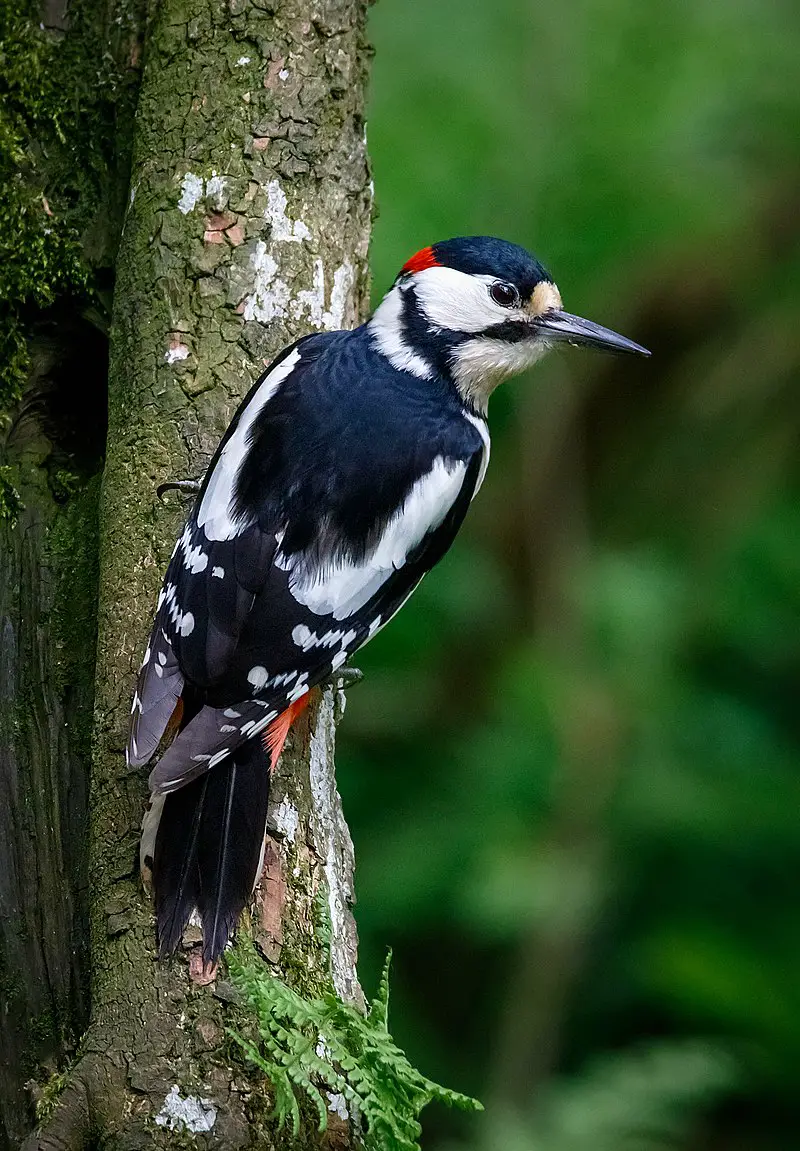
The Great Spotted Woodpecker is a fascinating bird. It has black and white feathers, with red patches on its lower belly and head or neck depending on whether it’s male or young.
This species inhabits most of the Palearctic region as well as some parts of North Africa.
For much of its range, it remains in one place all year round but may migrate if food sources become limited further north.
Its diet consists mainly of insects found under tree bark along with small amounts of seeds and fruit when available.
Despite being quite vocal they are hard to spot due to their camouflaged feathers which helps protect them from predators like cats and birds-of-prey.
Scientific classification:
| Kingdom | Animalia |
| Phylum | Chordata |
| Class | Aves |
| Order | Piciformes |
| Family | Picidae |
| Genus | Dendrocopos |
| Species | D. major |
Also Featured In: Most Common Romanian Birds, Birds of Sweden
3. European Green Woodpecker
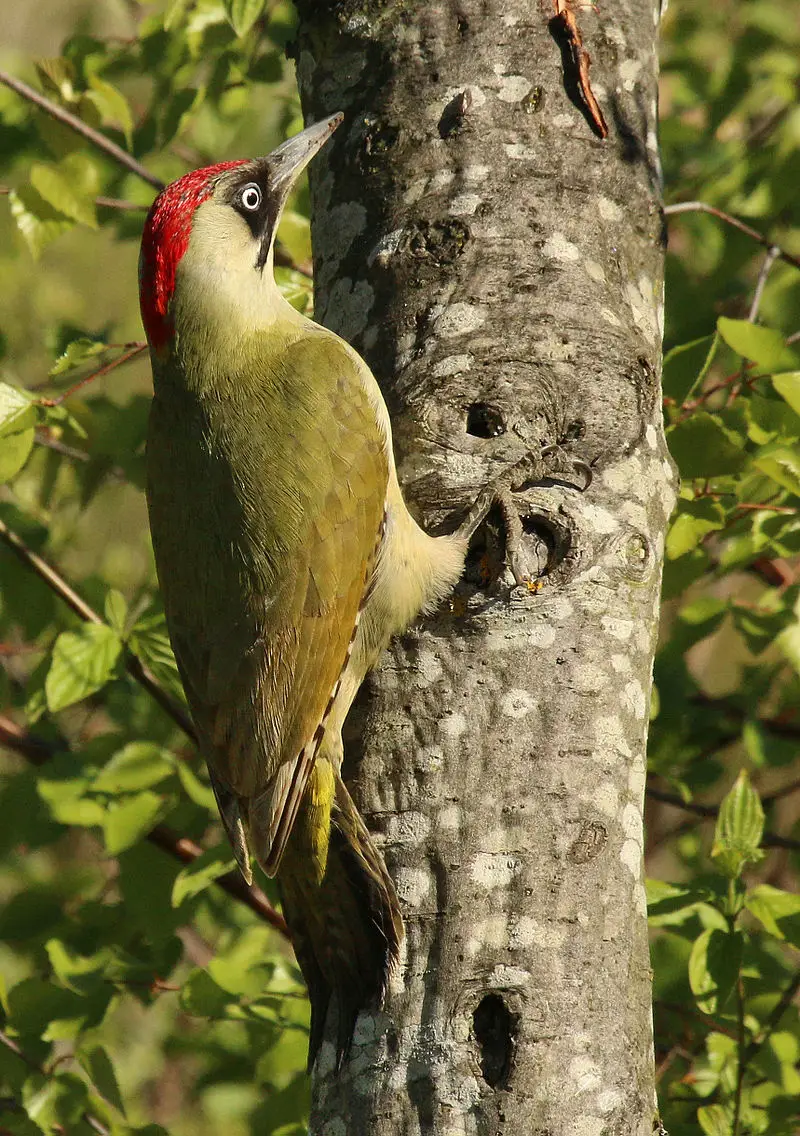
The European green woodpecker is a vibrant species with striking features. The body has an emerald hue, while males have a red crown and black moustache that extends to the middle of their forehead.
Females lack this characteristic feature but instead possess barred markings beneath the wings as well as yellow throats and cheeks.
It can be found in many parts of Europe and western Palearctic regions such as Spain and Portugal where it is replaced by its similar cousin; Iberian green woodpecker (Picus sharpei).
This bird loves inhabiting open forests or grasslands for its food source which typically consists on insects like ants, beetles, spiders among others.
Its powerful bill allows it to dig into tree bark searching for larvae underneath making it an efficient predator in these environments.
Scientific classification:
| Kingdom | Animalia |
| Phylum | Chordata |
| Class | Aves |
| Order | Piciformes |
| Family | Picidae |
| Genus | Picus |
| Species | P. viridis |
Also Featured In: Italian Birds You Should Know, European Birds
4. Common Crane
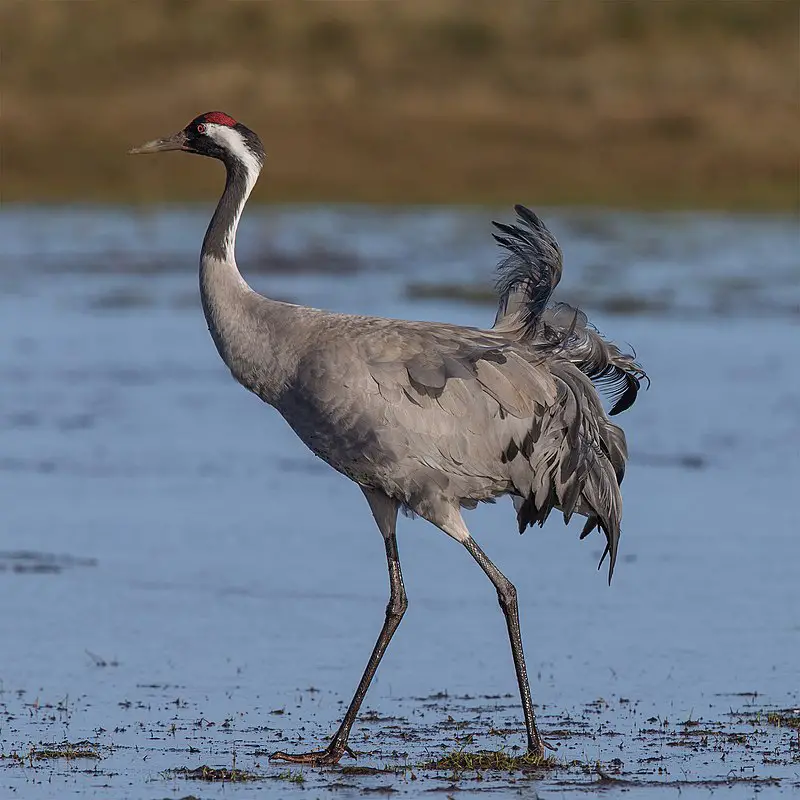
The Common Crane is a beautiful bird with grey plumage and white feathers on its head, neck and wings. It stands up to 1m tall and has a wingspan of around 2m.
This species is found in Europe as well as parts of Asia, Africa and the Middle East. Their diet consists mainly of plants such as grasses, grains, insects and small invertebrates like worms or molluscs.
The crane typically forages by walking slowly through fields looking for food items that it can pick out from the ground using its long beak.
During breeding season they gather together in large flocks which are an impressive sight to behold.
These birds have been known to live up to 25 years in captivity; however their lifespan is likely shorter when living wild due to predation risk from eagles or foxes amongst other threats.
Scientific classification:
| Kingdom | Animalia |
| Phylum | Chordata |
| Class | Aves |
| Order | Gruiformes |
| Family | Gruidae |
| Genus | Grus |
| Species | G. grus |
Also Featured In: Swamps Birds You Should Know, Birds that can be Seen in October
5. Common Cuckoo
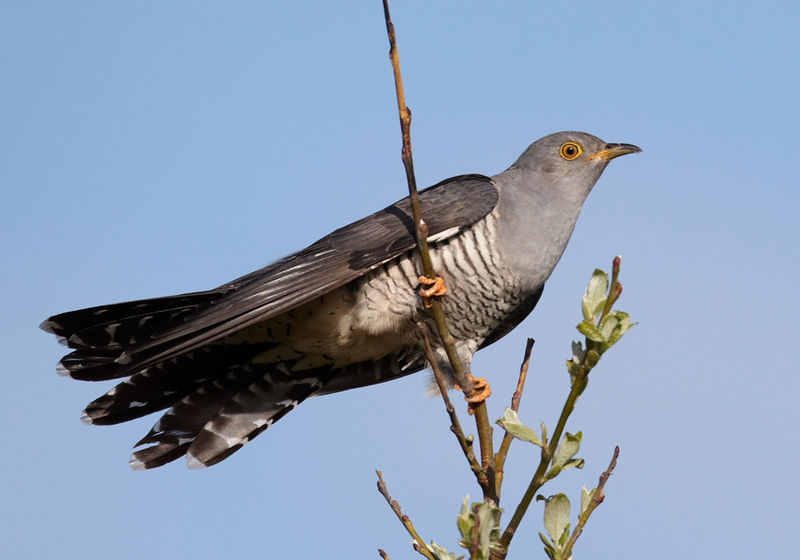
The Common Cuckoo is a medium sized bird belonging to the cuckoo family. It is found in Europe and Asia during summers, migrating to Africa for wintering.
This species has adapted an interesting lifestyle of being a brood parasite – it lays its eggs in other birds’ nests most often that of dunnocks, meadow pipits and reed warblers.
The host bird then incubates the egg as if it were their own which hatches earlier than any other chicks present there thus gaining more attention from the parent birds resulting in better growth rate for Common Cuckoo chicks who are bigger than even their hosts.
Scientific classification:
| Kingdom | Animalia |
| Phylum | Chordata |
| Class | Aves |
| Order | Cuculiformes |
| Family | Cuculidae |
| Genus | Cuculus |
| Species | C. canorus |
Also Featured In: Ukrainian Birds You Should Know, Belarus Birds You Should Know
6. White Stork
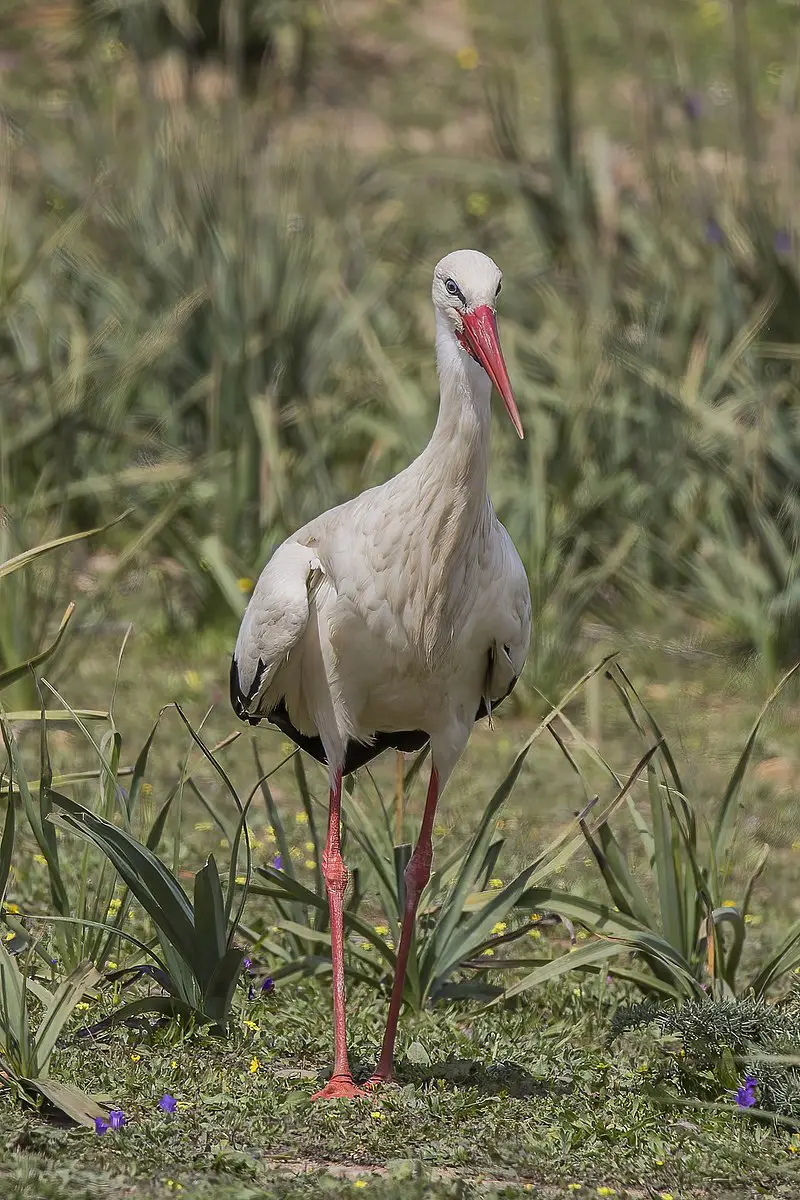
The White Stork is a majestic bird found in Europe, with white plumage and black wings. It has long slender legs and beaks that are usually bright red in color.
The average adult stands around 100 – 115 cm tall from beak to tail tip, while its wing span can reach up to 155-215 cm wide. There are two subspecies of the White Stork which differ slightly by size.
They feed on small animals such as frogs, fish or insects and nest near human dwellings due to the abundance of food available there; they also build nests atop chimneys or roofs when given the chance.
These birds have been revered for centuries as symbols of fertility because their return each spring often coincides with an increase in births among humans living nearby – something superstitious people take great note of.
Scientific classification:
| Kingdom | Animalia |
| Phylum | Chordata |
| Class | Aves |
| Order | Ciconiiformes |
| Family | Ciconiidae |
| Genus | Ciconia |
| Species | C. ciconia |
Also Featured In: Most Common Lithuanian Birds, Amsterdam Birds You Should Know
7. Tawny Owl
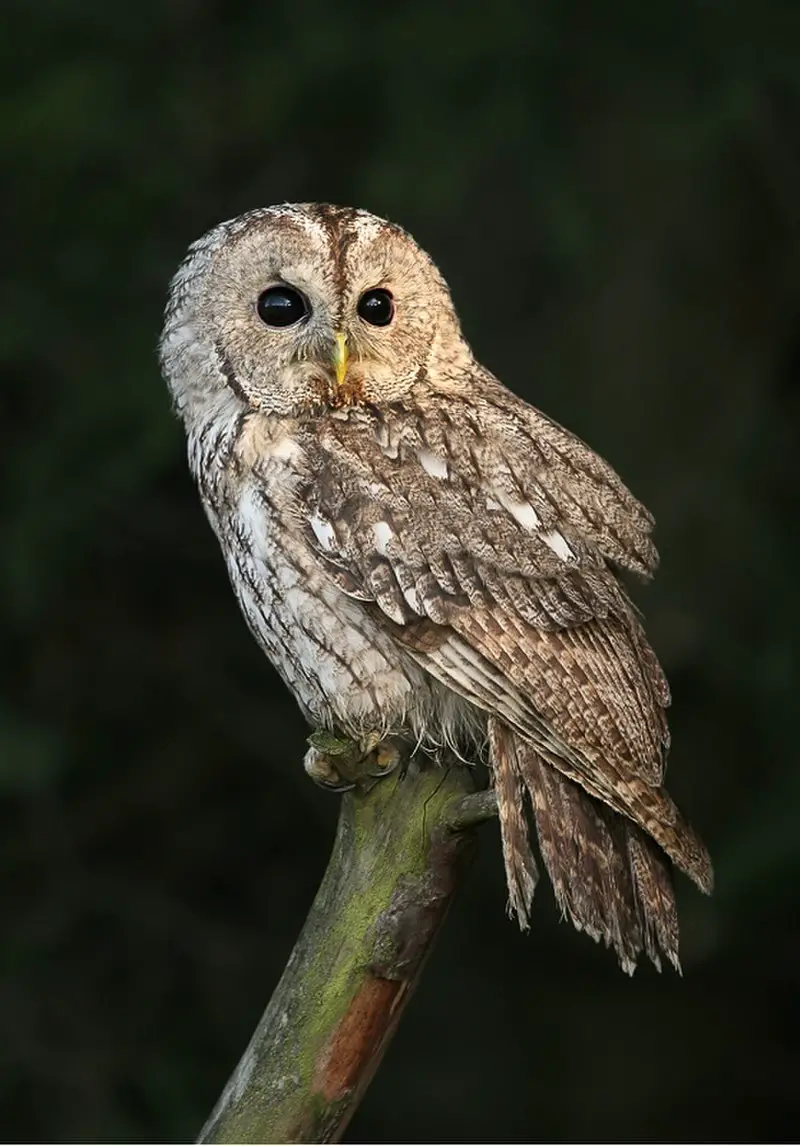
The Tawny Owl is a stunning bird found in woodlands throughout Europe to western Siberia. It has seven recognized subspecies, each with its own subtle differences.
This stocky owl usually has pale underparts with dark streaks and either brown or gray upper feathers. They build their nests high up in tree holes and are very territorial when it comes to protecting them.
During the day they roost quietly among branches of trees but become quite active at night as they hunt small mammals like mice and shrews using their extraordinary hearing skills.
The tawny owl’s call can be heard echoing through forests on still nights making it one of the most recognizable owls around.
Scientific classification:
| Kingdom | Animalia |
| Phylum | Chordata |
| Class | Aves |
| Order | Strigiformes |
| Family | Strigidae |
| Genus | Strix |
| Species | S. aluco |
Also Featured In: Birds You’ll Find in Zoo, Most Common Scotland Birds
8. Eurasian Eagle-Owl
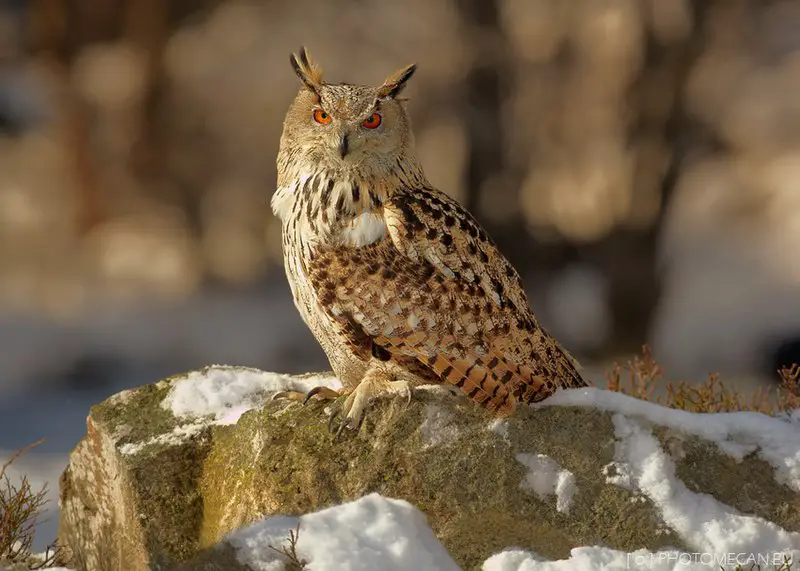
The Eurasian eagle-owl is a majestic bird that inhabits much of Eurasia. It has an impressive wingspan of up to 6 ft 2 in, and females can reach lengths of 30 inches.
The Uhu, as it is sometimes called, boasts distinctive ear tufts which are easily visible against its mottled brown plumage.
This powerful owl preys on small mammals like rodents and hares; however due to their large size they have been known to hunt larger prey such as foxes or even deer.
They usually nest in cavities located high off the ground but will also use manmade structures if available.
With their prominent presence across Europe, these birds are often seen perched atop trees during the day before setting out for hunting at night – truly magnificent creatures.
Scientific classification:
| Kingdom | Animalia |
| Phylum | Chordata |
| Class | Aves |
| Order | Strigiformes |
| Family | Strigidae |
| Genus | Bubo |
| Species | B. bubo |
Also Featured In: Birds You’ll Find in Moldova, Flight Birds You Should Know
9. Little Owl
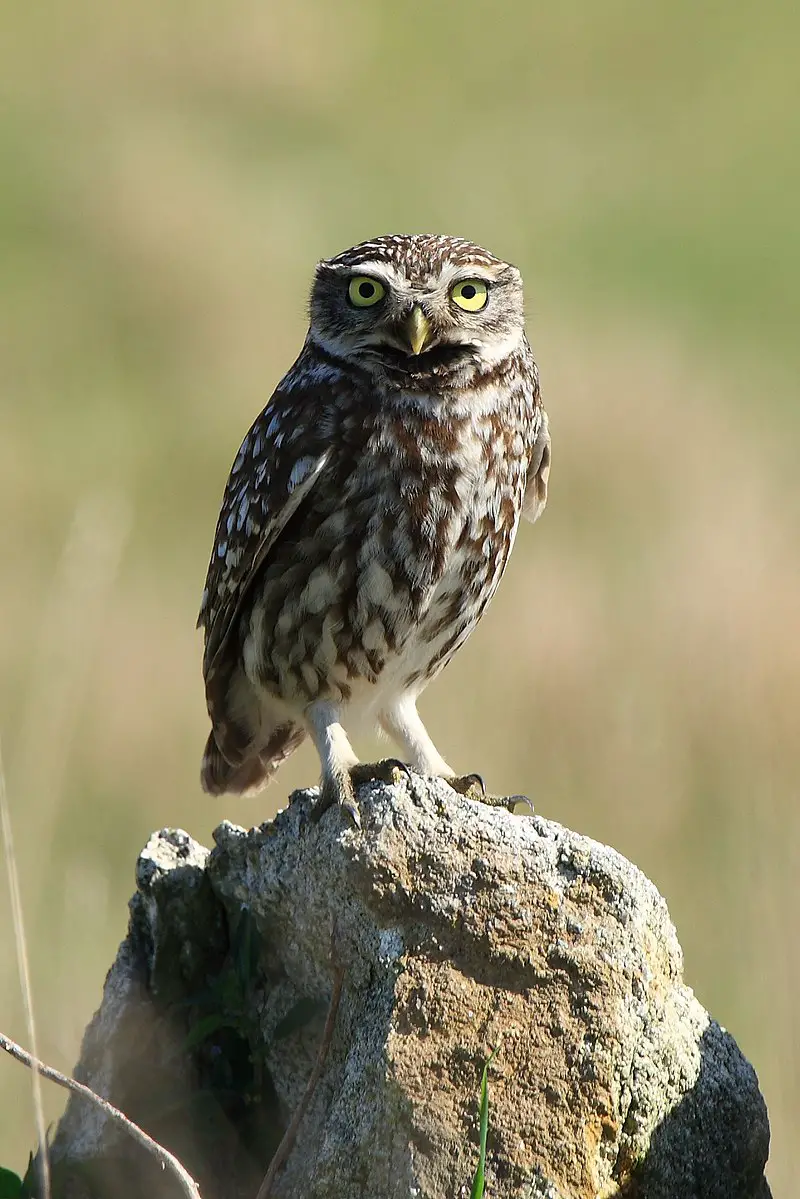
The Little Owl is a fascinating bird that inhabits much of the temperate and warmer parts of Europe, East Asia and North Africa. It’s also known as the “Owl of Athena” or “Owl of Minerva”.
This species was introduced to Britain in late 19th century and New Zealand’s South Island during early 20th century.
They belong to Strigidae family which are true owls with small bodies but large heads along with big eyes that helps them spot prey at night.
These birds feed on insects, earthworms, rodents like mice etc., making them beneficial for controlling pests around agricultural lands.
Besides these benefits they have become an important part in folklore associated with wisdom and knowledge over years due their silent presence near human dwellings after dark hours.
Scientific classification:
| Kingdom | Animalia |
| Phylum | Chordata |
| Class | Aves |
| Order | Strigiformes |
| Family | Strigidae |
| Genus | Athene |
| Species | A. noctua |
Also Featured In: Common Serbian Birds, Common Birds of Portugal
10. Great Cormorant
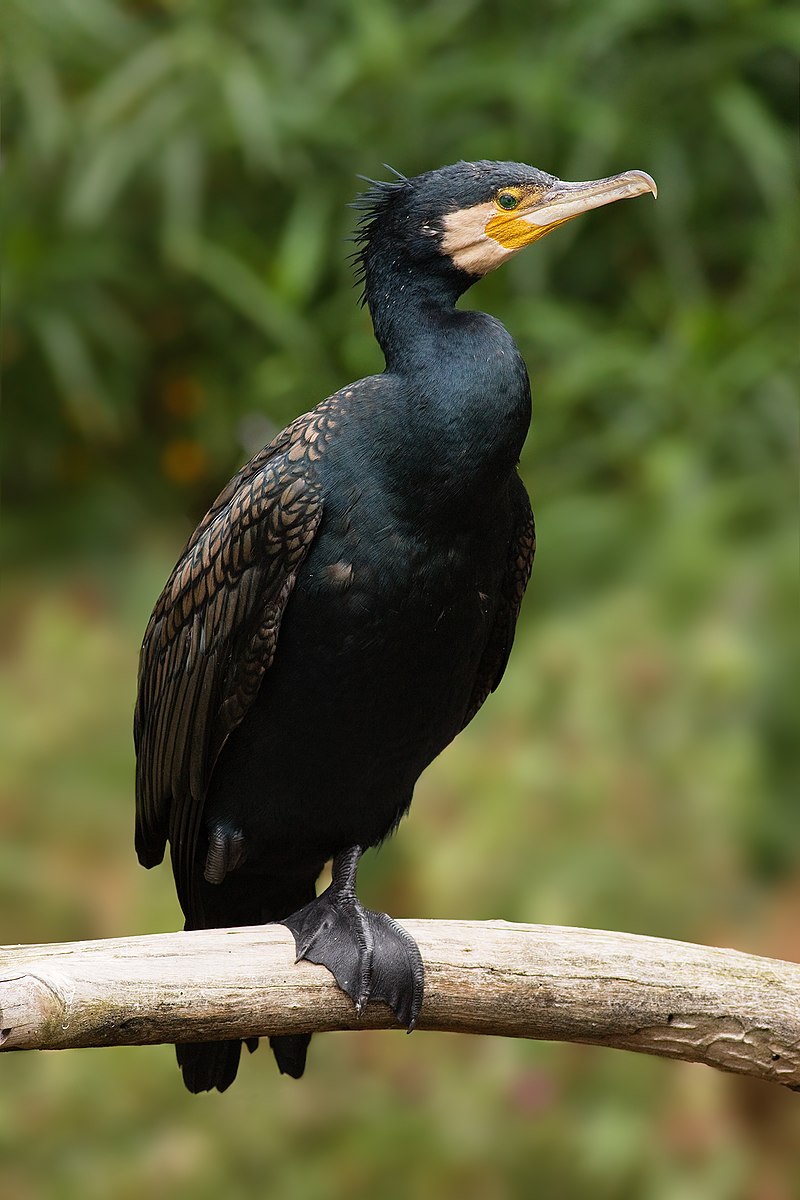
The Great Cormorant is a large seabird belonging to the cormorant family. It has many names, including Black Shag in New Zealand and Large Cormorant in India.
Its striking black feathers make it easy to recognise along coastlines or near bodies of water. The bird can measure up to 1 metre long with a wingspan of around two metres and weighs roughly 3 kilograms.
In flight, its neck is stretched out straight ahead while its bill points downwards – an unmistakable sight for any keen observer.
Cormorants are strong swimmers and excellent divers, frequently going underwater in search of food such as fish or crustaceans that they scavenge from the ocean floor.
They live primarily on coasts but have also been seen inland where there are suitable waterways available – providing another opportunity for nature lovers hoping to catch a glimpse of this impressive species.
Scientific classification:
| Kingdom | Animalia |
| Phylum | Chordata |
| Class | Aves |
| Order | Suliformes |
| Family | Phalacrocoracidae |
| Genus | Phalacrocorax |
| Species | P. carbo |
Also Featured In: Water Birds Live around Us, Common Estonian Birds
11. Common Starling

The Common Starling is a medium-sized passerine bird that belongs to the starling family. It has glossy black plumage with a metallic sheen, and in certain times of year it can be speckled with white.
The bill and legs are typically pink or black depending on the season, while its length measures about 8 inches long.
Its diet consists mainly of insects but also includes small fruits and seeds as well as some human food waste.
They live in large flocks which provides protection against predators, although they can become quite aggressive when defending their nesting sites during breeding seasons.
Overall, this species is highly adaptable and widely distributed across many parts of Europe making them one of the most successful birds in the region today.
Scientific classification:
| Kingdom | Animalia |
| Phylum | Chordata |
| Class | Aves |
| Order | Passeriformes |
| Family | Sturnidae |
| Genus | Sturnus |
| Species | S. vulgaris |
12. Great Crested Grebe
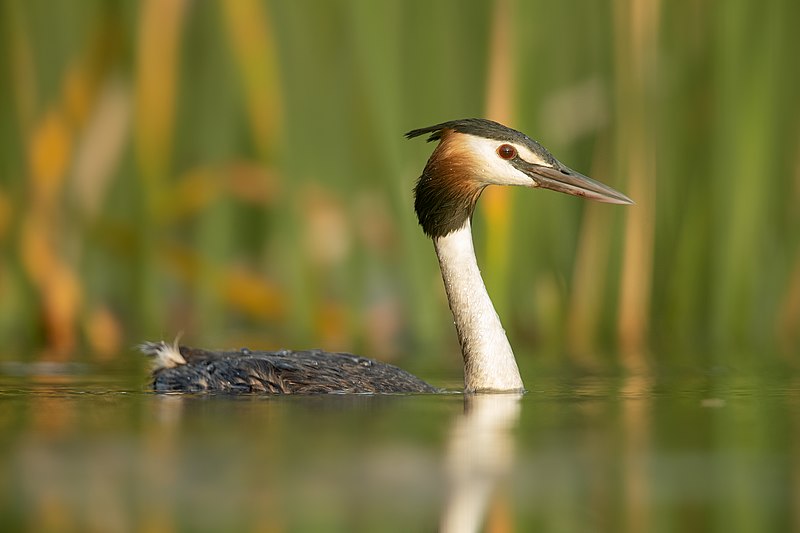
The great crested grebe is a beautiful water bird belonging to the grebe family. It is easily identified by its striking head crest, which it displays during mating rituals.
Originally classified in 1758 by Carl Linnaeus as Colymbus cristatus, this species has since become the type example for all other members of its genus Podiceps.
Great crested grebes are known for their intricate courtship behavior such as synchronized swimming and “head-shaking” motions used to attract mates.
They also possess unique features like red eyes and lobed feet that help them swim efficiently underwater when hunting for food.
The great crested grebe can be found throughout much of Europe, Asia, Africa and Australasia where they inhabit freshwater wetlands or shallow lakeshores with plenty of vegetation nearby to hide from predators while nesting
Scientific classification:
| Kingdom | Animalia |
| Phylum | Chordata |
| Class | Aves |
| Order | Podicipediformes |
| Family | Podicipedidae |
| Genus | Podiceps |
| Species | P. cristatus |
Also Featured In: Common Birds in London, Common Birds Found near Ishigaki
13. Common Swift
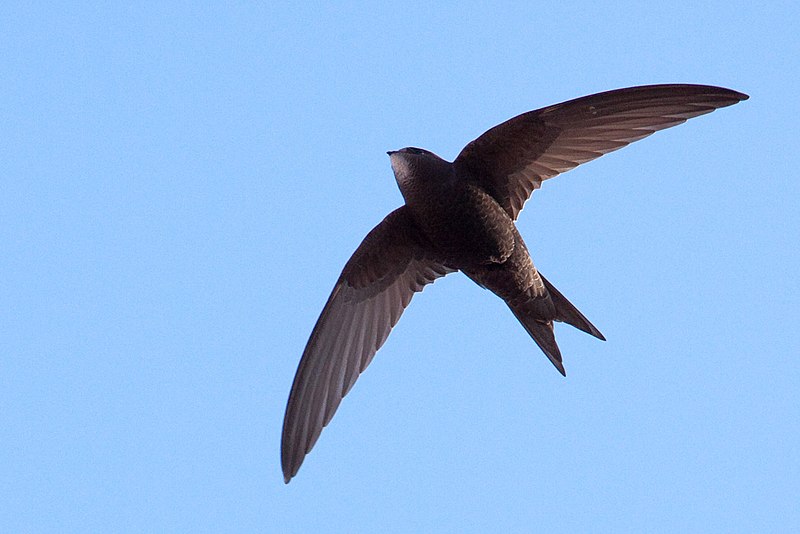
The Common swift is a medium-sized bird with an appearance similar to the barn swallow or house martin.
Its wings are larger, however it is not related to these species but instead belongs in its own order of Apodiformes.
The similarities between the two groups have come about due to convergent evolution and a shared environment.
As for relatives, they can be found among New World hummingbirds and South American swifts; whereas more distant cousins include nightjars as well as treeswifts from Asia/Africa and Australian swiftspecies.
These birds live up high in the air where they remain on constant flight even when sleeping or eating.
They usually migrate south during winter months then return again each springtime bringing life back into our skies.
Scientific classification:
| Kingdom | Animalia |
| Phylum | Chordata |
| Class | Aves |
| Order | Apodiformes |
| Family | Apodidae |
| Genus | Apus |
| Species | A. apus |
Also Featured In: Turkey Birds You Should Know, Birds of Latvia
14. Northern Goshawk
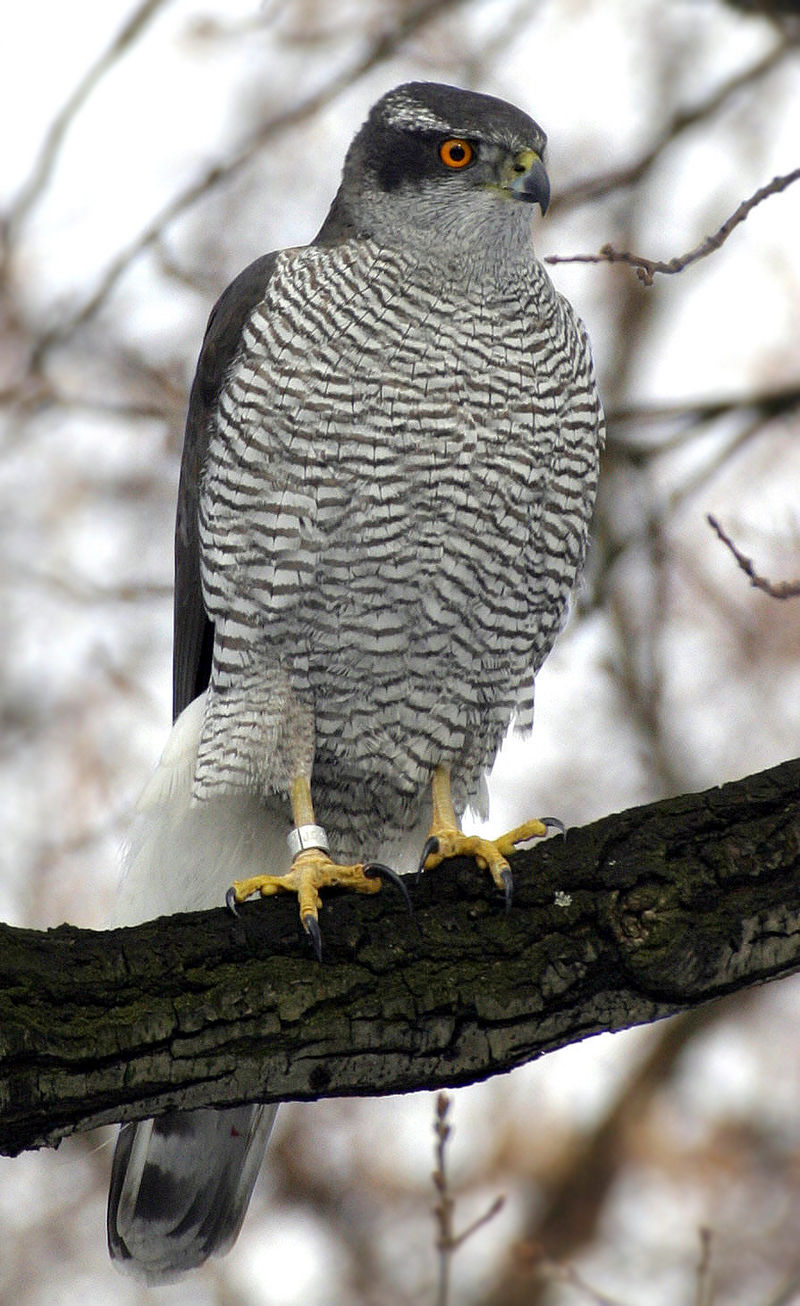
The Northern Goshawk is a medium-large bird of prey belonging to the Accipitridae family. It has been known as one of the true hawks, with “Accipiter” meaning hawk in Latin and “gentilis” referring to its noble characteristics.
They are found worldwide, most commonly in wooded areas such as forests or thickets where they hunt small birds and mammals.
The males have spotted grey upperparts while females tend to be fully brown above with some lighter barring on their underparts.
These raptors rely heavily on speed and agility when hunting from either perches or during aerial dives at high speeds for their prey which makes them formidable predators that can reach up to 40 mph.
Scientific classification:
| Kingdom | Animalia |
| Phylum | Chordata |
| Class | Aves |
| Order | Accipitriformes |
| Family | Accipitridae |
| Genus | Accipiter |
| Species | A. gentilis |
Also Featured In: Common Birds in the Cities, Common Birds in Alberta
15. Eurasian Hoopoe
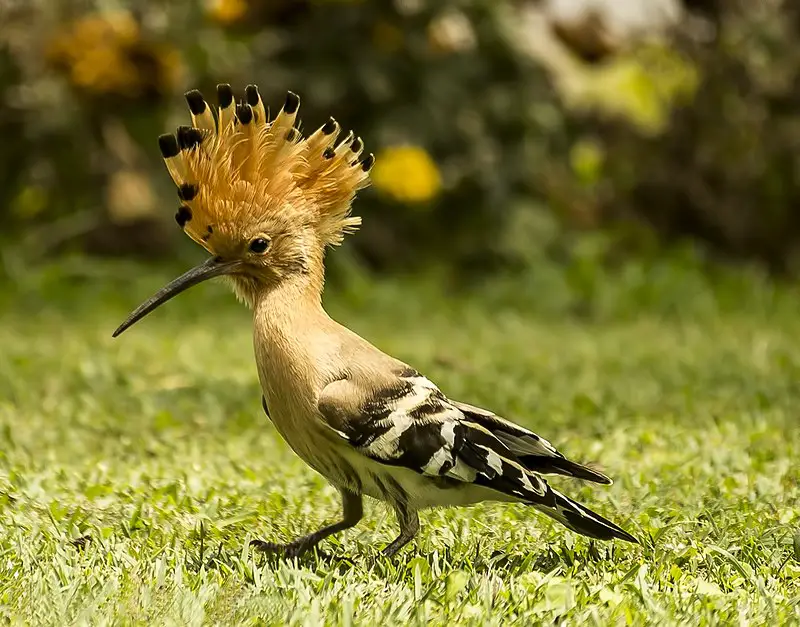
The Eurasian hoopoe is a unique and stunning bird. Its cinnamon-coloured body contrasts sharply with its black-and-white wings, while the tall erectile crest gives it an even more distinctive appearance.
It also has a broad white band across its black tail and a long narrow downcurved beak. When you hear this species of birds call, it’s typically “oop-oop-oop”, very soft yet unmistakable in tone.
This beautiful creature can be found throughout Europe, Asia and northern Africa where they mainly migrate for cooler climates during winter months.
The Eurasian hoopoe is truly one of nature’s most majestic creations – from their vibrant plumage to their mellow calls – making them unforgettable creatures that will never cease to amaze us all.
Scientific classification:
| Kingdom | Animalia |
| Phylum | Chordata |
| Class | Aves |
| Order | Bucerotiformes |
| Family | Upupidae |
| Genus | Upupa |
| Species | U. epops |
Also Featured In: Most Common Nature Birds, Most Common Spain Birds
16. Common Kingfisher
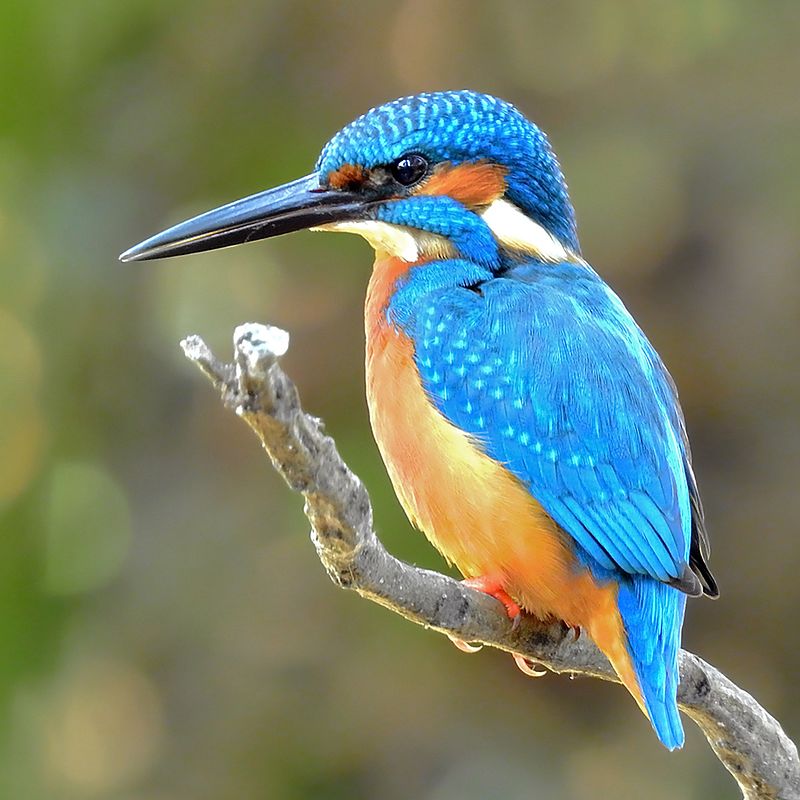
The Common Kingfisher is a small, sparrow-sized bird that can be found across Eurasia and North Africa. It has the typical short tail and large head of kingfishers with seven different subspecies recognized in its range.
They are mainly resident birds but will migrate away during winter when rivers freeze over. The species usually live near bodies of water such as streams or lakes.
Where they hunt for fish by diving from above into the water after spotting their prey below them.
These brightly coloured birds have an unmistakable vibrant blue plumage along with orange underparts and white patches on their wings which makes them easy to recognize amongst other similar looking species.
Their call is loud and shrill making it one of the most recognizable sounds heard around wetlands throughout Europe.
Scientific classification:
| Kingdom | Animalia |
| Phylum | Chordata |
| Class | Aves |
| Order | Coraciiformes |
| Family | Alcedinidae |
| Subfamily | Alcedininae |
| Genus | Alcedo |
| Species | A. atthis |
17. Barn Owl
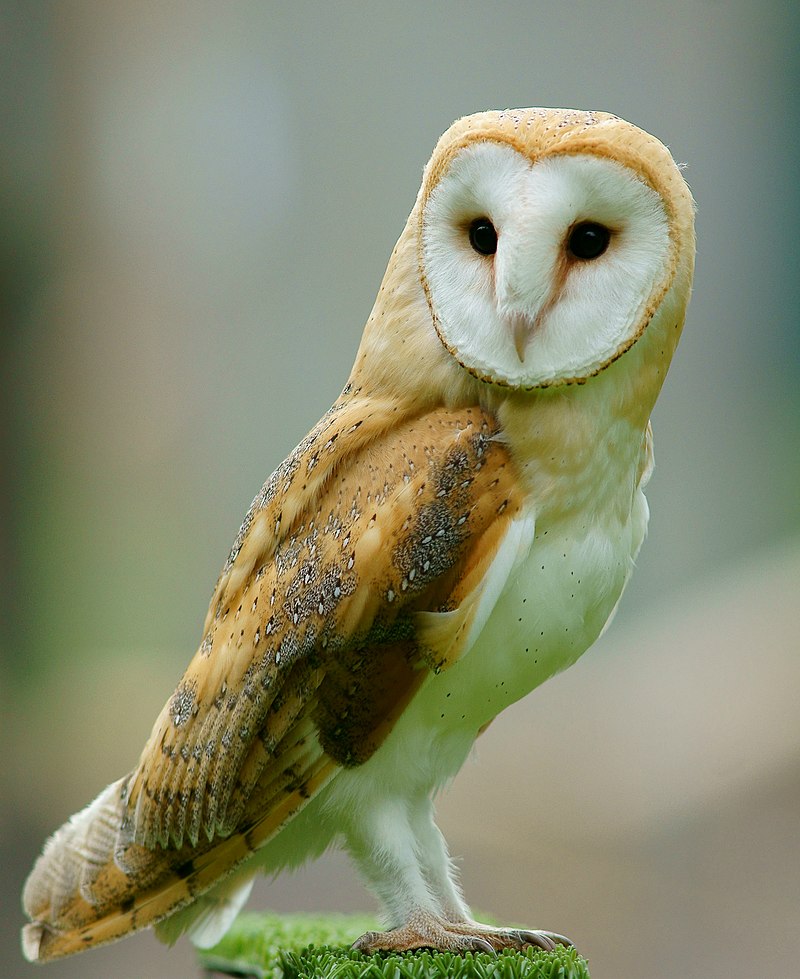
Barn owls are a beautiful and fascinating species of birds found around the world, with the exception of polar and desert regions, most of Indonesia and some Pacific Islands.
They have large eyes, thin legs and long wings that help them to hunt silently in low light conditions.
Their white colouring helps them blend into their surroundings making it easier for them to catch prey.
Barn owls are nocturnal hunters who use their impressive hearing capabilities to locate rodents moving within vegetation or tunnels beneath the ground.
They also feed on insects such as beetles, moths etc., which they can detect from high up in flight using their excellent vision even at night time.
The barn owl plays an important role in balancing ecosystems by controlling rodent populations which is why they should be protected wherever possible so that this vital service continues uninterruptedly.
Scientific classification:
| Kingdom | Animalia |
| Phylum | Chordata |
| Class | Aves |
| Order | Strigiformes |
| Family | Tytonidae |
| Genus | Tyto |
| Species | T. alba |
Also Featured In: Famous Paintings Birds, Birds You’ll Find in Night
18. Grey Partridge
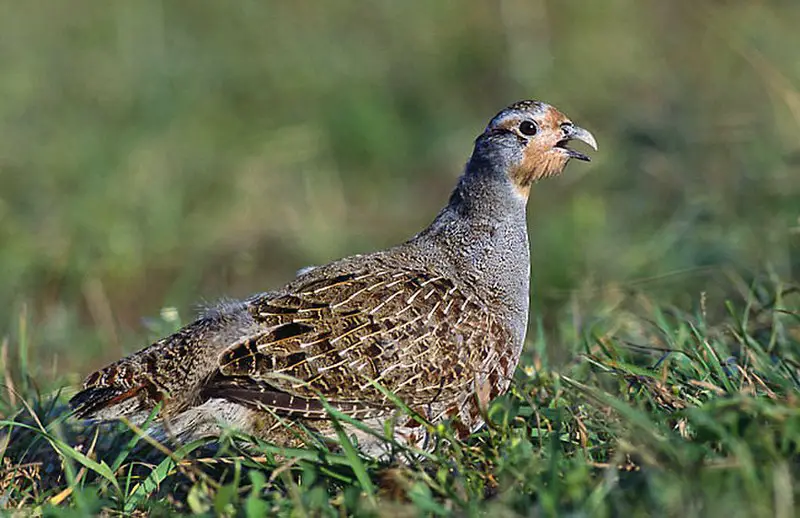
The Grey Partridge is a species of gamebird native to Europe and Asia. It has an iconic rotund body, brown back, grey flanks and chestnut-brown wings with white stripes along the edge.
The bird is named after its scientific name Perdix perdix which originates from Ancient Greek meaning “partridge”.
In addition to its appearance, it can also be recognized by its distinct call consisting of three short whistles followed by one long whistle.
This species feeds mainly on seeds but also consumes insects especially during breeding season when they are essential for their young ones growth.
They live in open grasslands or cultivated fields where they find enough food sources and suitable places for nesting like shallow depressions lined with dry vegetation such as leaves or feathers.
Scientific classification:
| Kingdom | Animalia |
| Phylum | Chordata |
| Class | Aves |
| Order | Galliformes |
| Family | Phasianidae |
| Genus | Perdix |
| Species | P. perdix |
19. Eurasian Reed Warbler
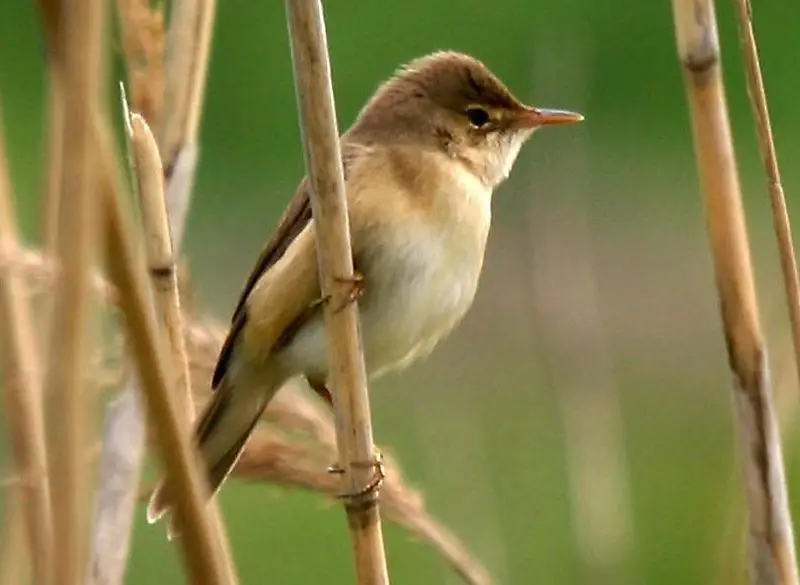
The Eurasian reed warbler (Acrocephalus scirpaceus) is a species of Old World Warbler native to the temperate parts of Europe and Asia.
It breeds in wetlands such as marshes, ponds and rivers with dense vegetation like reeds or tall grasses.
During its wintering season, it migrates southward to sub-Saharan Africa where there are milder conditions.
This small bird has streaked brown plumage on the upperparts and white underparts which makes it difficult for predators to spot among the foliage.
Its diet consists mainly of insects including aphids, caterpillars larvae and moths caught while flying over water or by gleaning from plants growing near water bodies.
The male sings an attractive song consisting of several phrases repeated one after another as part of their courtship display during breeding season in order attract females for mating purposes.
Scientific classification:
| Kingdom | Animalia |
| Phylum | Chordata |
| Class | Aves |
| Order | Passeriformes |
| Family | Acrocephalidae |
| Genus | Acrocephalus |
| Species | A. scirpaceus |
20. European Goldfinch
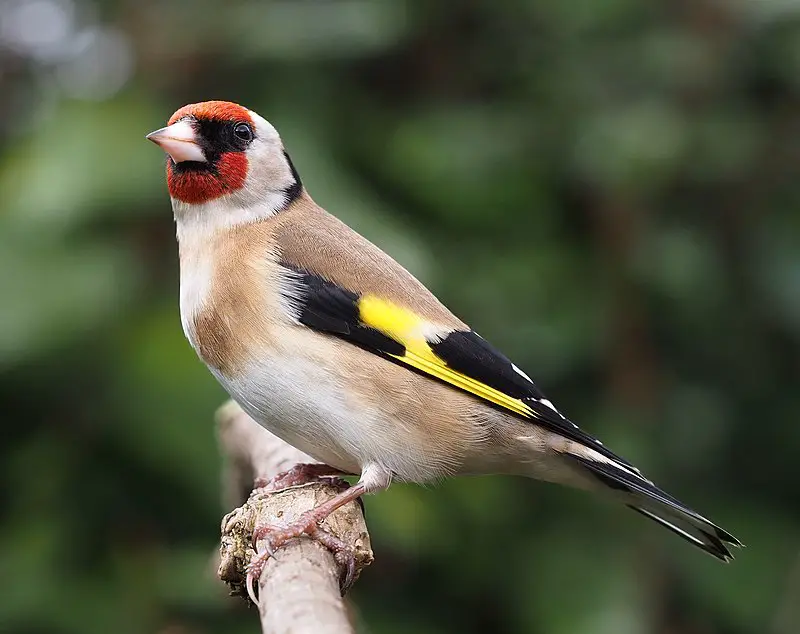
The European Goldfinch is a small passerine bird belonging to the finch family. It inhabits Europe, North Africa, western and central Asia but has been introduced in other places such as Australia, New Zealand and Uruguay.
The breeding male of this species can be easily identified by its red face with black markings around the eyes and black-and-white head.
Its back and flanks are buff or yellowish in color while it has white underparts which contrast well with its dark wings edged in white feathers.
This bird feeds on grains from plants like millet or sunflower seeds along with insects occasionally when available during summer months for food source.
In winter they flock together near sources of water where they find their food among weeds growing there at that time of year.
Scientific classification:
| Kingdom | Animalia |
| Phylum | Chordata |
| Class | Aves |
| Order | Passeriformes |
| Family | Fringillidae |
| Subfamily | Carduelinae |
| Genus | Carduelis |
| Species | C. carduelis |
Also Featured In: Most Common Songs Birds that Live around You, Autumn Birds You Should Know
21. Red Kite
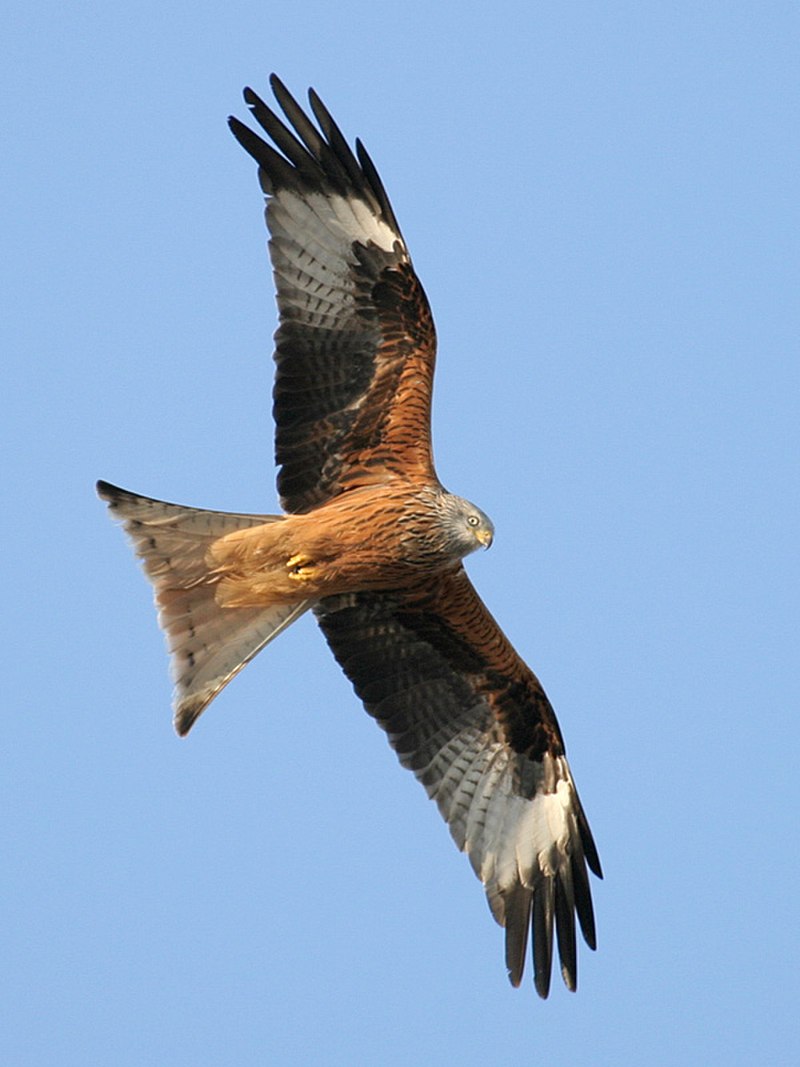
The Red Kite is a magnificent bird of prey, belonging to the family Accipitridae. It can be found in western Europe and northwest Africa where it breeds, while also occurring occasionally in northern Iran.
These birds are medium-large size with wingspans ranging from 125 – 170 cm wide. They have reddish brown plumage on their upperparts and pale gray underneath.
The Red Kite feeds mainly on small mammals, carrion and insects which they hunt for by soaring through the air using thermals to gain altitude before diving down onto its prey.
Furthermore, this species has adapted well to human presence since it often scavenges near roadsides or rubbish dumps as an easy source of food.
All things considered, these majestic creatures make up a beautiful part of our natural environment that should definitely not go unnoticed.
Scientific classification:
| Kingdom | Animalia |
| Phylum | Chordata |
| Class | Aves |
| Order | Accipitriformes |
| Family | Accipitridae |
| Genus | Milvus |
| Species | M. milvus |
Also Featured In: Common Slovakian Birds, Scavengers Birds You Should Know
22. Black Grouse
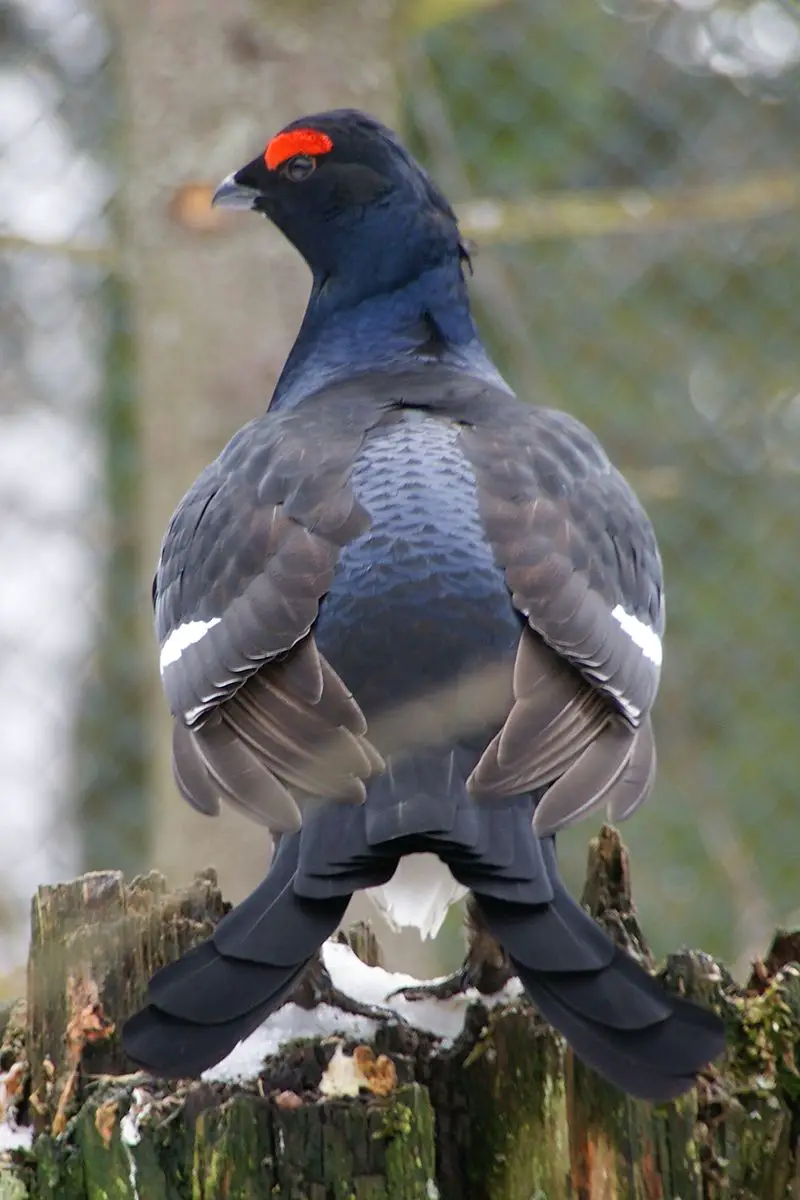
The black grouse is a large bird in the grouse family. It lives mainly in moorland and steppe habitats, often near wooded areas. In winter, it moves to dense forests where its diet consists almost exclusively of conifer needles.
These birds have an impressive wingspan of up to 75 cm wide, with males boasting dark metallic plumage and white tail feathers that they display during courtship rituals known as ‘leks’. Females are smaller than males with more brownish-grey coloured feathers.
Both sexes possess red combs above their eyes which become brighter during mating season – along with yellow wattles on their throats.
The black grouse is considered vulnerable due to loss of habitat caused by human activity such as deforestation and agricultural practices.
Scientific classification:
| Kingdom | Animalia |
| Phylum | Chordata |
| Class | Aves |
| Order | Galliformes |
| Family | Phasianidae |
| Genus | Lyrurus |
| Species | L. tetrix |
Also Featured In: Moorland Birds You Need to Know, Birds of Wales: Exploring Diverse Habitats and Conservation Efforts
23. Black Woodpecker
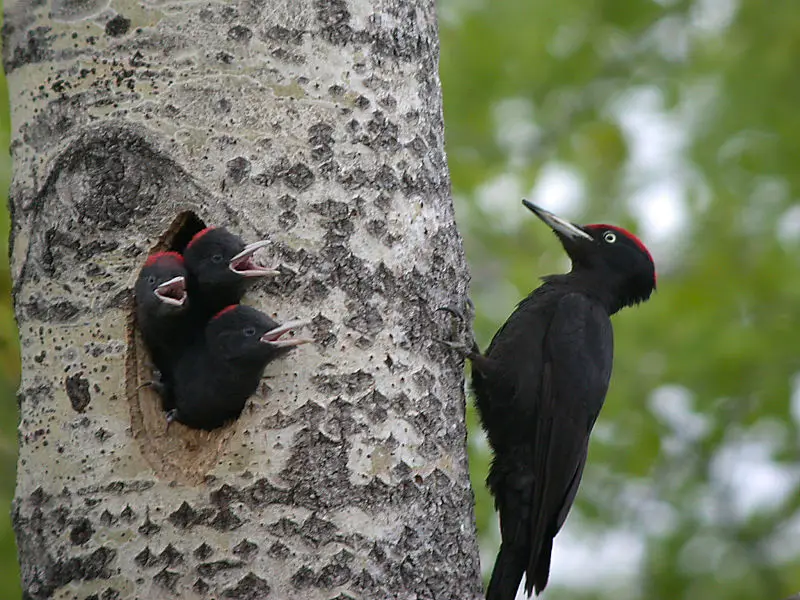
The black woodpecker is an impressive bird found in mature forests across the northern Palearctic region.
It stands out from other species due to its large size and striking black feathers with white spotting on their wings and tail.
Not only is it one of the largest woodpecker species worldwide but also, interestingly, appears to be expanding its range in Europe and Asia as well.
This non-migratory bird loves spending time amongst trees where they can feed off insects which live within tree trunks or branches; tapping away at them with their strong bills until they get a meal.
Scientific classification:
| Kingdom | Animalia |
| Phylum | Chordata |
| Class | Aves |
| Order | Piciformes |
| Family | Picidae |
| Genus | Dryocopus |
| Species | D. martius |
Also Featured In: Birds You’ll Find in Hokkaido,
24. Eurasian Nuthatch
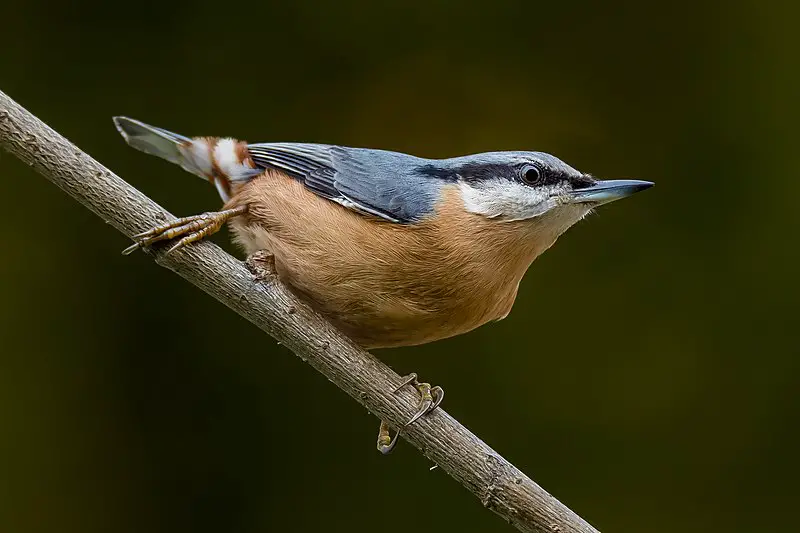
The Eurasian nuthatch is a small passerine bird found in the Palearctic region, most commonly in Europe. It has blue-gray upper parts, an orange-buff underbelly, and a black eye stripe.
The distinctive characteristic of this species is its loud dwip call which can be heard throughout its range.
This species has more than 20 subspecies divided into three main groups based on their geographical ranges.
Those from western regions having the buffest coloration while eastern birds are greyer overall.
They usually feed on insects and spiders but also eat nuts and seeds when available, often storing them for later use by wedging them into bark crevices or similar places to retrieve later as needed.
Scientific classification:
| Kingdom | Animalia |
| Phylum | Chordata |
| Class | Aves |
| Order | Passeriformes |
| Family | Sittidae |
| Genus | Sitta |
| Species | S. europaea |
Also Featured In: Birds Found in Hungary,
25. Common Snipe
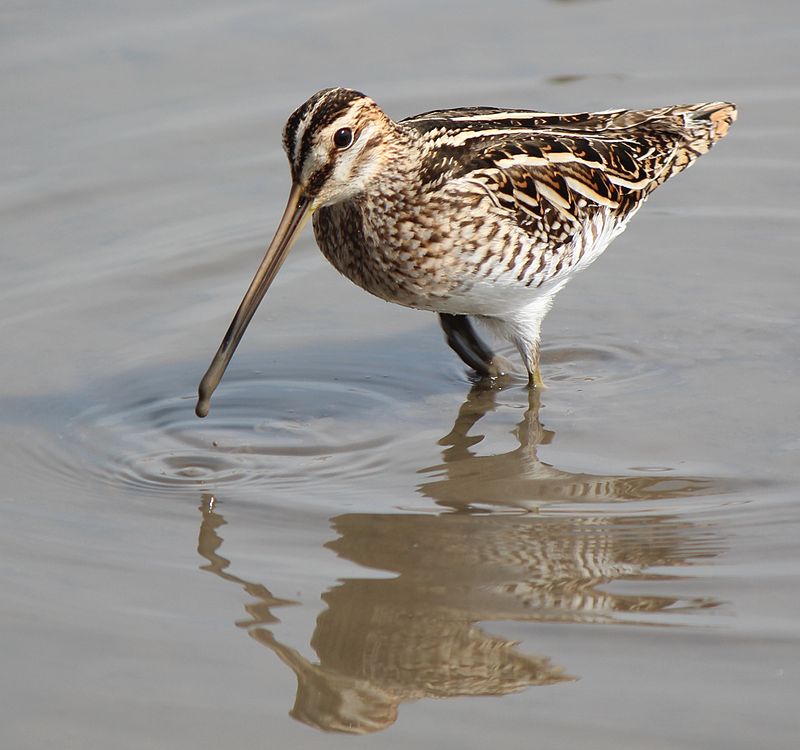
The Common Snipe is a small wader bird that can be found throughout the Palearctic region, from Iceland to northern Russia and Siberia. It breeds in marshes, bogs, tundra and wet meadows during summertime.
Its diet consists of earthworms and insects which it finds by probing with its long bill into soft ground.
During winter months they migrate southwards in search of more favourable conditions for breeding; however their exact migration routes remain unknown.
These birds are fairly secretive but can often be seen skulking around wetlands using their cryptic mottled brown plumage as camouflage against predators.
They have an unmistakable flight pattern – rapid bursts of wing-beats interspersed with glides – making them one of the most distinctive species on our planet.
Scientific classification:
| Kingdom | Animalia |
| Phylum | Chordata |
| Class | Aves |
| Order | Charadriiformes |
| Family | Scolopacidae |
| Genus | Gallinago |
| Species | G. gallinago |
Also Featured In: Tokyo Birds You Need to Know,
26. Northern Lapwing
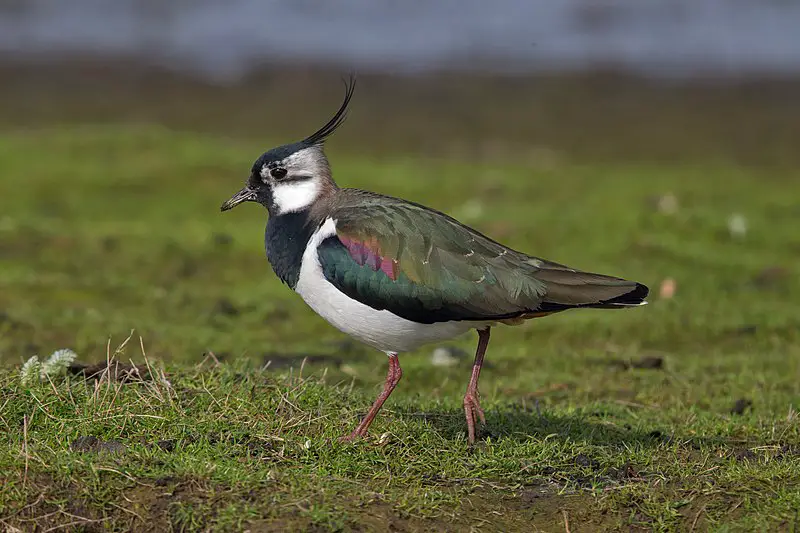
The Northern Lapwing is a beautiful bird found in temperate Eurosiberia. It has several names, such as Peewit or Pewit, Tuit, Green Plover and Pyewipe – all of which describe its unique call that resembles the sound of “peee-wit.”
During winter months it migrates to places like North Africa, India and parts of China.
The adult lapwings are mainly black and white with crest on their heads while juveniles have mottled brown feathers.
They feed on insects which they catch by making a short flight from the ground then hovering briefly before diving back down again.
Their long red legs make them stand out amongst other birds when they walk around looking for food.
A lovely sight.
Scientific classification:
| Kingdom | Animalia |
| Phylum | Chordata |
| Class | Aves |
| Order | Charadriiformes |
| Family | Charadriidae |
| Genus | Vanellus |
| Species | V. vanellus |
Also Featured In: Flocks Birds around Us,
27. European Turtle Dove
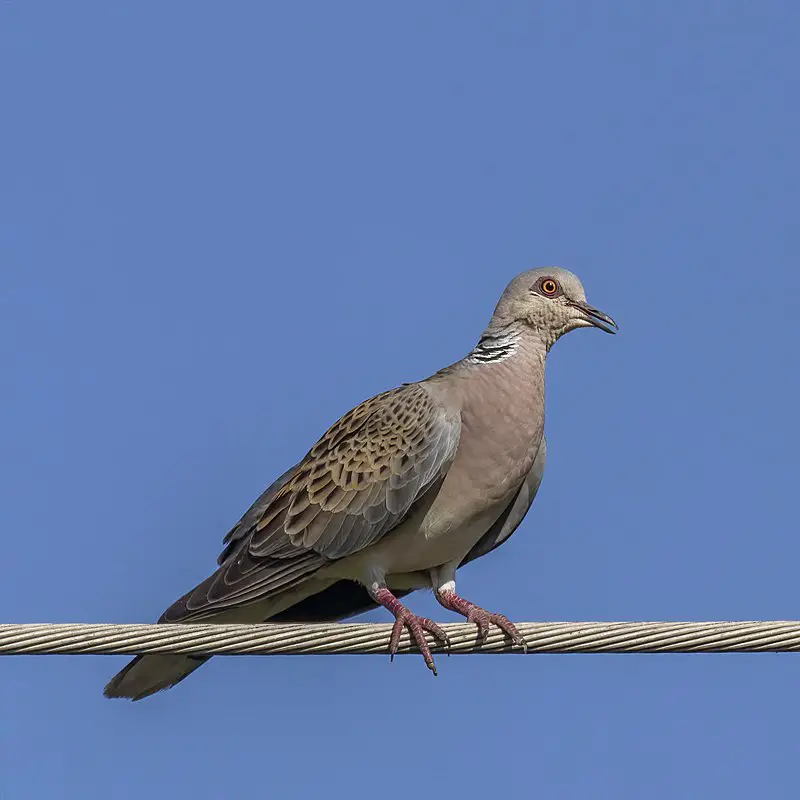
The European turtle dove is a beautiful bird belonging to the Columbidae family of doves and pigeons. It has a wide range across south western Palearctic, including northern Africa, but migrates to sub-Saharan Africa in winter.
The species was officially described by Carl Linnaeus in 1758 as part of his Systema Naturae. This small yet elegant creature can be recognized by its distinctive reddish-brown color with black spots on its wings and tail feathers.
Its underparts are yellowish white while it’s back is grey with dark streaks that run through it making for an attractive patterned plumage.
They feed mainly on grains found on grasslands or near roadsides and have a unique cooing call which makes them easily distinguishable amidst other birdsong.
Scientific classification:
| Kingdom | Animalia |
| Phylum | Chordata |
| Class | Aves |
| Order | Columbiformes |
| Family | Columbidae |
| Genus | Streptopelia |
| Species | S. turtur |
28. Eurasian Wryneck
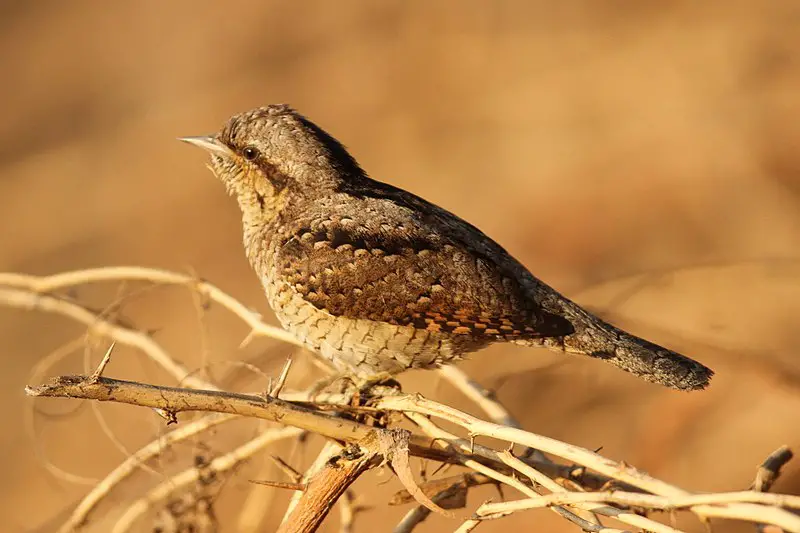
The Eurasian Wryneck is a species of woodpecker found in temperate regions of Europe and Asia. They breed during the summer months, but migrate south to tropical Africa or southern Asia for winter.
These birds are quite adaptable when it comes to their habitat, as they can be seen in open countryside, woodland, orchards and gardens alike.
To identify them you should look out for their distinctive brownish-grey feathers with black bars on the wings and tail; males also have red markings around their neck too.
Their diet consists mainly of insects which they find by probing into loose bark on trees or digging through soil with its sharp bill.
All in all an amazing bird that deserves more attention.
Scientific classification:
| Kingdom | Animalia |
| Phylum | Chordata |
| Class | Aves |
| Order | Piciformes |
| Family | Picidae |
| Genus | Jynx |
| Species | J. torquilla |
Also Featured In: Common Uzbekistan Birds, Native Birds of Kazakhstan
29. Eurasian Curlew
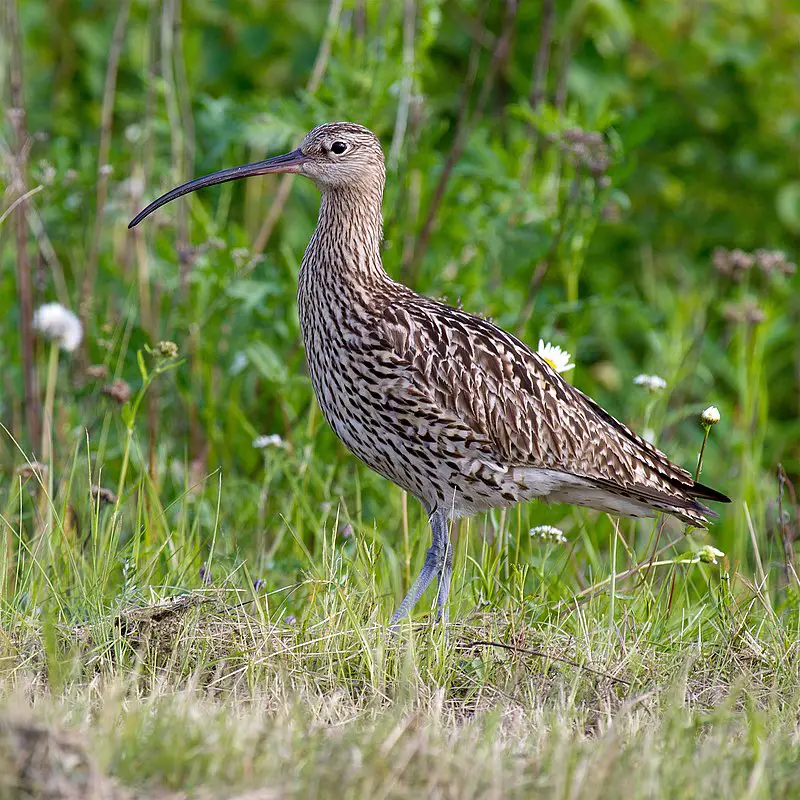
The Eurasian curlew is a wader bird belonging to the Scolopacidae family. It has an incredibly wide range, breeding across temperate Europe and Asia. This species can be easily identified by its long, curved bill and distinctive white underparts.
The male’s head typically appears striped while the female’s tends to be mottled brown in coloration with dark streaks on her neck and breast feathers.
With wingspans of almost two feet, these birds are quite large compared to other members of their genus.
Despite being so widespread they remain vulnerable due to ongoing habitat loss or degradation as well as hunting practices along migration routes or during wintering grounds visits.
Scientific classification:
| Kingdom | Animalia |
| Phylum | Chordata |
| Class | Aves |
| Order | Charadriiformes |
| Family | Scolopacidae |
| Genus | Numenius |
| Species | N. arquata |
Also Featured In: Asian Birds, Birds of Orkney
30. Barn Swallow
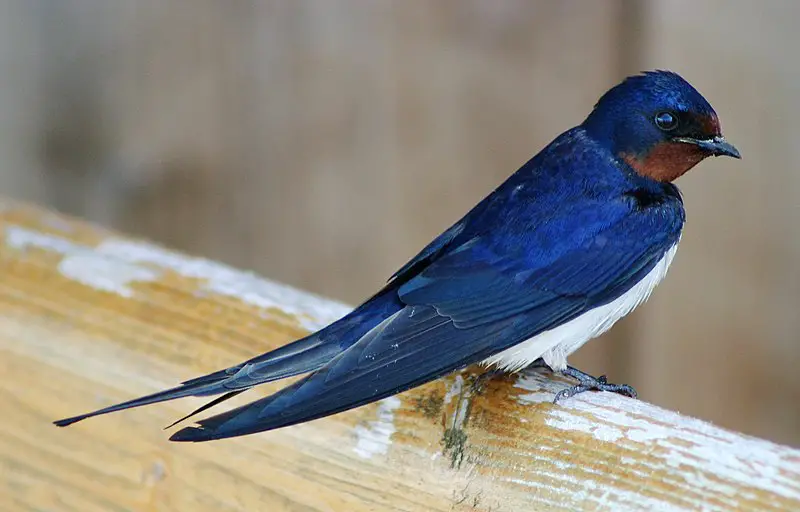
The Barn Swallow is a beautiful passerine bird with blue upperparts and a long, deeply forked tail. Found in Europe, Asia, Africa and the Americas.
It has an astonishingly large natural distribution spanning 251 million square kilometres globally; likely making it one of the world’s most widespread species.
This swallow typically nests near human habitation as well as other open areas such as fields or grasslands which provide them with suitable invertebrate prey to feed on.
They are insectivorous birds that often fly together in flocks looking for food over rivers or marshes usually just above tree-top level.
The barn swallow can also be identified by its strong flight consisting of swift continuous wing beats interspersed with glides during which they hold their wings slightly raised at the shoulders giving them distinct V shaped silhouettes in the sky.
Scientific classification:
| Kingdom | Animalia |
| Phylum | Chordata |
| Class | Aves |
| Order | Passeriformes |
| Family | Hirundinidae |
| Genus | Hirundo |
| Species | H. rustica |